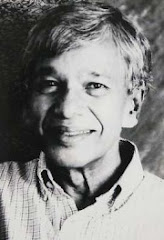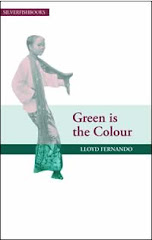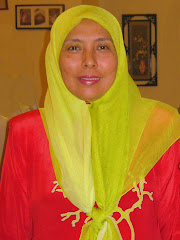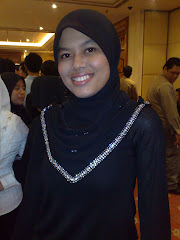Lloyd Fernando's Green is the Colour is a very interesting novel of ideas, set in an almost dystopian Malaysia in the aftermath of the racial riots of May 13, 1969. I play a role as an editor in this assignment. I found Lloyd Fernando is not like other typical Malay writer and unique in his works. He uses many of academic references in his detachment writing style but the message shines through nonetheless. Green is the Colour is also a book which is full of compassion. He was promoting this idea of bilingualism; people in Malaysia should know at least two languages, Malay language and English language as well.
I regard the novel as one of the most important works of Malaysian fiction in any language. They came from a writer who loved his country enough to advocate eschewing narrow tribal concerns in favour of humanism and harmony. Lloyd Fernando also highlights the limitations of multiracialism as a guiding ideology for Malaysia in this novel.
In the national capital, Malay civil servants behave as though nothing untoward has happened. They mouth neo-Confucian platitudes about loyalty and patriotism, and ritualistically denounce Western influence on Malaysian society. In fact, the country is awash in disruption, disorder, and violence. Cars are dented, glass is splintered, and Hindu shrines are desecrated. There are curfews, roadblocks, and military checkpoints. Armed militia roams the landscape, assaulting and torturing the enemies of powerful politicians and Islamic fundamentalism.
Fernando is superb on the context of Malaysian place and time. His love of the physical landscape verges on pantheism, emphasizing the seductive appeal of the red hibiscus and the angsana tree, the cool, flowing water of the rivers, the green padi plants of the sawah, and the taste of fruits such as mangosteens, bananas, rambutans, and durians. There is also the easy familiarity with an urban academic fellow.
Llyod Fernando had early education in Singapore and later having obtaining a Ph.D. in English from the University of Leeds, England. His education gained in overseas influence the way he express his thought and ideas and it can be seen in the characters portrayed in the novel.
According to Peter Wicks, one of the associate professor of Asian Studies in his article entitle Lloyd Fernando’s Literary Vision of Malaysia, the four main characters are drawn from upper-class multiracial elite, held together by the bonds of school, university, professional careers, and the English language. All of them are doomed. There is ‘Harry’ Dahlan, an Anglicized Malay lawyer, activist, and social critic notorious for his unconventional views and outspoken behaviour. There is Yun Ming, the Malay-speaking, idealistic civil servant who works for the Department of Unity, but finds very little of it outside Kuala Lumpur. There is Sara (short for Siti Sara Hanafiah), the beautiful academic sociologist trapped in a loveless marriage to a fundamentalist convert. There is Gita, another academic sociologist and Sara’s best friend, who marries Harry Dahlan only to see him arrested and brutally tortured for his beliefs.
There is great depth of characterization in this novel. Sara is ostensibly the key integrative personality for the plot. Most of the male characters lust after her, including the sinister, devious, power-mad Panglima, a senior officer in the Department of Unity whose ethnic origins are shrouded in mystery and ambiguity. He could be Thai, or Cambodian, or Indian or Eurasian, but passes for Malay. It is the ill-fated, cross-cultural relationship between Sara and Yun Ming which centres the novel. Their passion and intensity cannot prevent their arrest by Muslim authorities in a country, which has descended into a scenario of horror and anarchy worthy of Francis Ford Coppola’s Apocalypse Now. Yun Ming is savagely beaten and Sara raped and assaulted by the Panglima to the extent that, at the end of the book, she cannot bear to contemplate male company ever again.
Ethnicity, inflamed by Islamic Puritanism, matters most in the end. Yun Ming might once have told his superiors that Malaysians of Chinese and Indian descent had to disregard their cultural roots and adopt one national way of doing things, but even the obliging Yun Ming balked at asserting that all Malaysians should follow the same religion. Sara comes closest to the truth when she reflects in calmer times: -
“Nobody could get May sixty-nine right, she thought. It was hopeless to pretend you could be objective about it. …the wound beneath continued to run pus.”
In Green is the Colour we also can see Llyod try to express his feeling about the challenge he encountered in his writing. The challenge is about his constant attempt to find ways of expressing himself in English without sounding like English. He avoided stock epithets and turns of phrase. He strove for Malaysian inflection. People always mistook him as a patrician professor of English because they never saw the colloquial Malaysian side of Lloyd. Green is the Colour for example also does not have any colloquial language.
This fictional works by Lloyd Fernando offer testimony to the persistence of substantial minority cultures that are different from the Malaysia as defined by ethnic Malay nationalism. The reader is left in no doubt that Fernando has a deep and profound affection for Malaysia, which is, of course, the land of his birth and upbringing. He yearns for recognition of cultural pluralism that is more than political lip service, and for a larger view of Malaysia that is integrative rather than assimilations. Above all that, this novel affected me more than I had anticipated.
Thursday, April 2, 2009
FROM THE EYES OF AN EDITOR
Posted by
Suraya Nordin
at
8:08 PM
![]()
Subscribe to:
Post Comments (Atom)




0 comments:
Post a Comment